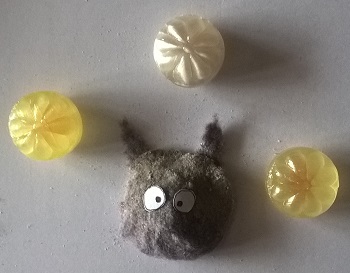How Orca got his Suction back
- Marie Dustmann
- Feb 19, 2020
- 3 min read

My vacuum cleaner is nicknamed Orca because of his black and white casing and because he’s also rather large and heavy to haul around. I also hoped that by anthropomorphising him, cleaning would become more fun. After having owned him for around eighteen months, I’m still waiting for this to happen.
Eating is his first love. In fact, he lives to eat. I let him out to pasture once a week, although I’m sure he’d love to feed more often if I gave him the chance.
When I first brought Orca into my home around eighteen months ago, he managed to stuff a lot of dust into his transparent belly. A line printed on his belly, says max. Not knowing what health problems he would endure if I didn’t heed that warning, I diligently emptied him out whenever his contents went too close to the max line.

As time went by, in spite of my diligent emptying of Orca’s bowels, his external filters kept on becoming more and more felted with dust and he kept on demanding more and more comfort cleans.
In my on-going effort to make cleaning more interesting, I used some of that dust to make dust bunnies.
In a recent feeding session Orca’s external filters were coated full of dust, even though his outside chambers were empty. Now he demanded a comfort clean every few minutes instead of every few weeks. I had to turn him off and on five times a session to keep him feeding, extending his session far longer than it should have gone. He seemed weaker too.
Something was wrong with Orca and he was out of warranty.
He also had an instruction manual. It was time to consult it.
It turned out my vacuum cleaner buddy’s innards needed a special clean.
Orca’s intestines were far more complicated than I’d first imagined. They consisted of multiple chambers and they needed special care. I also learned that whoever had written the instruction manual, translated into multiple languages, hadn’t arranged the information in a very straightforward manner.
I found out Orca had a fine dust container with a fine dust filter, a pre-filter, a filter frame, and a dust container. I also discovered that all of these compartments needed cleaning with water on a regular basis, which I hadn’t done. Poor Orca, I’d been neglecting him. He needed some TLC.
I did my best to follow the instructions in his manual. Some of his bits and pieces were difficult to winkle apart, but I managed. I did my water rinses under a tap. But that wasn’t enough. I found out I had to reach further into his innards to remove the internal fine dust filter. I hadn’t even known this part of him existed. Cleaning this part of him was classified as a fault resolution.
When I finally managed to pull out Orca’s internal fine dust filter from its chamber, it turned out that he was suffering from massive constipation. The pleats of his internal fine dust filters were packed with impacted dust. I had to scrape the dust out of every pleat, followed by a good rinsing of the pleats. I also heeded the manual’s warning to allow the fine dust filter to dry for a minimum of 24 hours because I didn’t want to stuff Orca up further. By now I no longer remembered what his parts were called.
Once Orca was cleaned out and dried out and I’d managed to reassemble him in the correct order, I pressed his power button. Orca had got his suction back. It hadn’t been fun cleaning him, but both of us were happier.






Comentarios